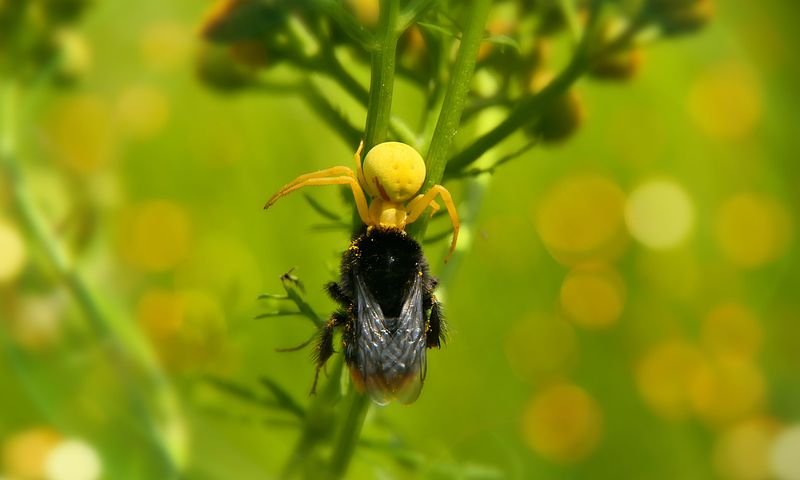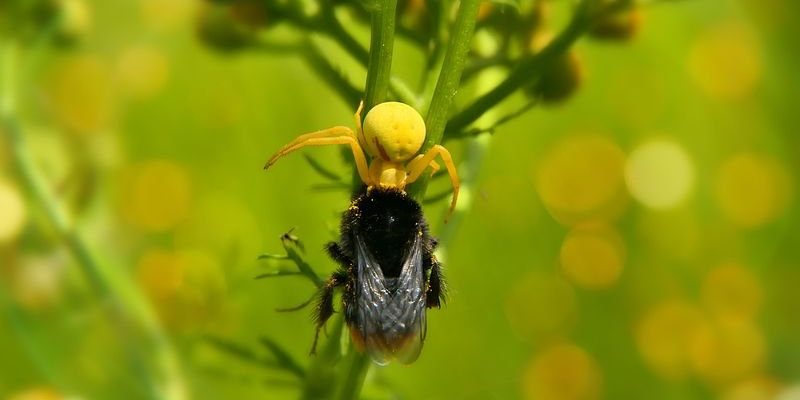
You might be wondering why it’s essential to talk about the threats and predators to bumblebees. Understanding what they face can spark our interest in protecting them. Just as we would worry about our friends when they’re in danger, bumblebees need our attention too. By knowing who or what threatens their survival, we can take action to create a safer environment for them. So, let’s delve into the world of bumblebee threats and discover what’s really putting them at risk.
Natural Predators of Bumblebees
Bumblebees are not just buzzing around without a care in the world. They have some natural enemies that make life pretty tough. Among the most notorious bumblebee predators are birds, particularly those that are swift and agile. Birds like swallows and hummingbirds have a keen eye for a fluffy bumblebee darting about. These feathered hunters can swoop down and catch a bumblebee mid-air, making it a meal.
Another group of bumblebee predators includes various insects. For example, wasps and certain species of spiders have been known to prey on bumblebees. A wasp will often wait stealthily near a flower and ambush its unsuspecting target. Think of it as the delicate dance of nature where the bumblebee is blissfully unaware of the lurking danger just around the petal.
While some of these predators are part of the natural reproductive cycle, it’s essential to recognize that the bumblebee population is not simply at the mercy of food chains. The balance of nature is finely tuned, and any disruption can have cascading effects.
Environmental Changes and Habitat Loss
One of the most significant threats to bumblebees comes from environmental changes. Imagine moving to a new neighborhood where all the parks are suddenly replaced with shopping malls—it’s overwhelming and disorienting, right? Well, that’s what bumblebees face when their habitats are destroyed. Urban expansion, agricultural development, and deforestation all chip away at the places bumblebees call home.
When we pave over landscapes and replace diverse flora with monocultures, we not only limit the bumblebees’ food sources but also disrupt their nesting sites. Bumblebees thrive in habitats filled with wildflowers and shrubs. Without these plants, they can struggle to find both food and places to raise their young. The loss of nesting areas can lead to a decline in bumblebee populations, which is alarming given their crucial role in pollination.
It’s important for us to consider how our actions—like choosing to plant native flora in our gardens—can encourage bumblebee populations to thrive. Simple changes in our landscaping choices can help create a more welcoming environment for these furry pollinators.
Climate Change: The Newest Threat
You may have heard a lot about climate change lately, and for good reason. It’s not just causing extreme weather but also significantly impacting bumblebee survival. As temperatures rise and weather patterns shift, bumblebees find it increasingly challenging to adapt.
For starters, changing temperatures can confuse their natural life cycles. For example, if flowers bloom earlier due to warmer weather, bumblebees might emerge too late, missing out on the food source they rely on. This mismatch can lead to starvation and decreased reproduction. Imagine a restaurant that changes its menu every season, but the regulars come in at the wrong time—they’ll leave hungry!
Moreover, climate change can affect the distribution of bumblebee species. Some species might thrive in warmer conditions, while others may struggle to survive. As habitats shift, bumblebees might find themselves out of their comfort zone, unable to locate suitable homes or resources.
Diseases and Parasites
Just like humans, bumblebees can get sick. They face threats from various diseases and parasites that can decimate their populations. One of the most notorious is the Nosema fungus, which infects bumblebees and can lead to decreased longevity and reproduction. Infected bees may struggle to forage and ultimately have a lower chance of survival.
Additionally, bumblebees can fall victim to parasites like Varroa mites, which typically affect honeybees but can also harm bumblebee colonies. These tiny pests latch onto bees and feed on their bodily fluids, weakening them as they go about their daily activities. It’s a bit like carrying an unwanted backpack that just keeps getting heavier—eventually, it becomes too much to handle.
These diseases and parasites are aggravated by environmental stressors, such as habitat loss and climate change. When bumblebees are already struggling, the added burden of illness can push them over the edge, leading to population declines.
Human Impact: Pesticides and Pollution
Humans can have a massive impact on bumblebees, and often, it’s not for the best. One of the most significant ways we affect these pollinators is through the use of pesticides. These chemicals, often designed to eliminate agricultural pests, can also collect on flowers and be toxic to bumblebees. When a bee visits a flower sprayed with pesticides, it can lead to disorientation, difficulty flying, and, in severe cases, death.
Imagine walking into a room filled with strong fumes—it’s hard to think straight, right? For bumblebees, exposure to pesticides acts in a similar way, making it difficult for them to navigate and forage.
Additionally, pollutants in the air and water can decrease their immune systems, making them more susceptible to diseases and parasites. Our modern lifestyle can create a toxic environment for these essential creatures, and being mindful of the products we use can help turn the tide.
Conservation Efforts to Protect Bumblebees
So, what can we do about these threats? Luckily, there are many ways to get involved and help protect bumblebees. Conservation efforts are vital for reversing some of the damage already done. This starts with habitat restoration, like planting native flowers and maintaining natural spaces. Even small gardens filled with blooming plants can make a difference—every little bit helps!
Another way to support bumblebees is by advocating for the reduction of pesticide use. Choosing organic gardening practices or supporting local farmers who prioritize sustainable practices can go a long way in creating a safer environment for these pollinators.
Lastly, educating others about the importance of bumblebees can spark enthusiasm and inspire action. Sharing information on social media, volunteering for local conservation groups, or simply spreading the word can help create a strong community of bee advocates.
In conclusion, bumblebees are more than just cute creatures buzzing around our gardens; they’re essential players in our ecosystem. By understanding the various predators and threats they face—from natural enemies and environmental changes to human impact—we can take steps to protect them. Every action counts, whether it’s planting a flower, reducing pesticide use, or educating our friends. Together, we can help ensure that bumblebees continue to thrive and do their vital work for years to come.

